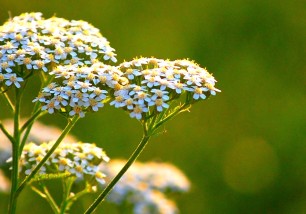TANGERINE ESSENTIAL OIL: USES AND PROPERTIES
aromatherapycold pressingessential oilfruitspoor digestionsteam distillationwater retention
Tangerine represents, together with Cedar and Grapefruit, one of the three citrus fruits from which all the others generated. Its taste, sweet and not too sour, made it popular and Tangerine is the second most requested citrus fruit, after orange.
Native to China, it was the last citrus fruit to be introduced to Europe in the early 19th century and it has the same name as the ancient Chinese empire officials, to whom it was offered as a gift.
This little tree with a thick crown, represents today not only a food source, but also a raw material for the extraction of different essential oils:
From the zest (fruit peel), via cold pressing, it is possible to obtain tangerine essential oil that will have a sweet, warm and fruity smell if extracted from red tangerine (ripe fruit) or a fresh, sharp, vibrant smell if extracted from green tangerine (unripe fruit).
From the leaves, via steam distillation, it is possible to obtain petitgrain Tangerine essential oil.
Tangerine essential oil, mainly made of limonene and γ-terpinene, has proven to be non-toxic and non-irritating enough to be used in children and pregnant women, both for inhalation or massages.
Even if it has not been proven to date, it may be photosensitizing, like the other essential oils of the genus Citrus. It is always better to avoid sun exposure after utilization on the skin.
USES AND PROPERTIES:
Psyche: Diffusing tangerine essential oil in a room is helpful against mild sleep disorders and anxiety, irritability, anguish and stress.
It facilitates relaxation during stressful work periods and relieves emotional and mental tensions.
Tangerine essential oil is very useful to children and can help them relax, sleep well and be peaceful and happy.
Well-being: Tangerine essential oil is helpful in cases of poor digestion, swelling, stomach or intestine cramps, muscle spasms and other intestinal problems.
It is an antiseptic and has an antimicrobial activity against different bacteria, so it can be used to disinfect both the respiratory tract and rooms and environments.
It has also a beneficial effect on the skin and circulation.
Dermatology: Tangerine essential oil can be used locally for lotions to improve acne, congested or oily skin, scars and skin spots. It is soothing and invigorating.
During pregnancy, it is helpful in preventing the formation of stretch marks and water retention.
For use to control stretch marks and cellulite, it can be used in association with lemon essential oil, both in the bathtub and for local application.
Diluted in a vegetable oil, for example almond oil, it is perfect to perform relaxing massages on the neck, shoulders and abdomen next to the celiac plexus, to get a restful sleep.
Food: Tangerine essential oil is used in the food industry to flavor sweets, beverages, liqueurs and medicines.
Thanks to its beneficial effect on the gastrointestinal system, it can easily be used at home as an alternative to the more commonly used orange essential oil, to prepare cookies and other sweets.
Adding this E.O. to a dessert at the end of the meal will improve the functioning of the gastrointestinal system, reduce undesired abdominal swelling and relax the body and the mind.
Remember that essential oils are extremely concentrated compounds and even a small amounts may cause side effects. For internal use always consult an expert or your doctor.
Be careful in cases of topical application too: essential oils contain small-sized molecules, easily absorbed by our skin. An excessive amount may cause dermatitis. Do not use in areas of damaged skin and avoid contact with mucous membranes and eyes because it may cause irritation.
Other articles that may interest you:
Aromatic water or floral waters: what are they?
 ESSENTIAL OILS: WELLNESS IN HOME
ESSENTIAL OILS: WELLNESS IN HOME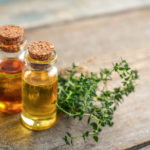 THYME ESSENTIAL OIL: USES AND PROPERTIES
THYME ESSENTIAL OIL: USES AND PROPERTIES AROMATHERAPY: HOW TO CHOOSE AN ESSENTIAL OIL
AROMATHERAPY: HOW TO CHOOSE AN ESSENTIAL OIL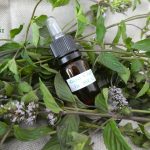 HOW TO DISTILL MINT
HOW TO DISTILL MINT AROMATHERAPY: HISTORY
AROMATHERAPY: HISTORY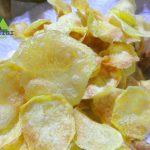 POTATO CHIPS WITH ROSEMARY AROMATIC WATER
POTATO CHIPS WITH ROSEMARY AROMATIC WATER ROSEMARY ESSENTIAL OIL: CULTIVATION AND PRODUCTION
ROSEMARY ESSENTIAL OIL: CULTIVATION AND PRODUCTION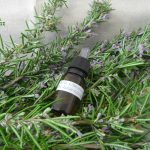 HOW TO DISTILL ROSEMARY
HOW TO DISTILL ROSEMARY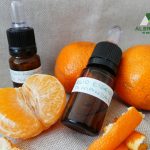 HOW TO DISTILL TANGERINE PEEL
HOW TO DISTILL TANGERINE PEEL NEEM OIL, FROM THE PLANT OF GOOD HEALTH
NEEM OIL, FROM THE PLANT OF GOOD HEALTH HERBAL TEAS, INFUSIONS AND DECOCTIONS: THE DIFFERENCES AND METHODS OF PREPARATION
HERBAL TEAS, INFUSIONS AND DECOCTIONS: THE DIFFERENCES AND METHODS OF PREPARATION HOW TO MAKE HOMEMADE ESSENTIAL OILS
HOW TO MAKE HOMEMADE ESSENTIAL OILS HEALTHY HAIR WITH AROMATIC PLANTS
HEALTHY HAIR WITH AROMATIC PLANTS THE GOOD NIGHT PLANTS
THE GOOD NIGHT PLANTS OLEOLITES: THE POWER OF HERBS IN OIL
OLEOLITES: THE POWER OF HERBS IN OIL ENFLEURAGE: ANCIENT TECHNIQUE TO EXTRACT ESSENCES FROM FLOWER PETALS
ENFLEURAGE: ANCIENT TECHNIQUE TO EXTRACT ESSENCES FROM FLOWER PETALS ESSENTIAL OILS AND ECOLOGICAL DETERGENTS FOR HOUSE CLEANING
ESSENTIAL OILS AND ECOLOGICAL DETERGENTS FOR HOUSE CLEANING OIL FOR STRENGTHENING HAIR
OIL FOR STRENGTHENING HAIR SCENTED BAGS WITH DRIED HERBS AND ESSENTIAL OILS
SCENTED BAGS WITH DRIED HERBS AND ESSENTIAL OILS PURIFYING AND CLEANSING HERBAL TEAS DO-IT-YOURSELF
PURIFYING AND CLEANSING HERBAL TEAS DO-IT-YOURSELF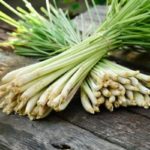 LEMONGRASS: ESSENTIAL OIL TO FIGHT TUMORS
LEMONGRASS: ESSENTIAL OIL TO FIGHT TUMORS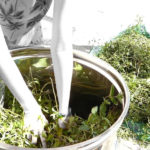 MINT ESSENTIAL OIL: CULTIVATION AND PRODUCTION
MINT ESSENTIAL OIL: CULTIVATION AND PRODUCTION CITRUS FRUITS AND ALZHEIMER’S DISEASE: NEW DISCOVERIES
CITRUS FRUITS AND ALZHEIMER’S DISEASE: NEW DISCOVERIES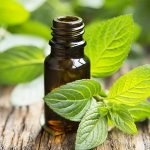 MINT ESSENTIAL OIL: USES AND PROPERTIES
MINT ESSENTIAL OIL: USES AND PROPERTIES



